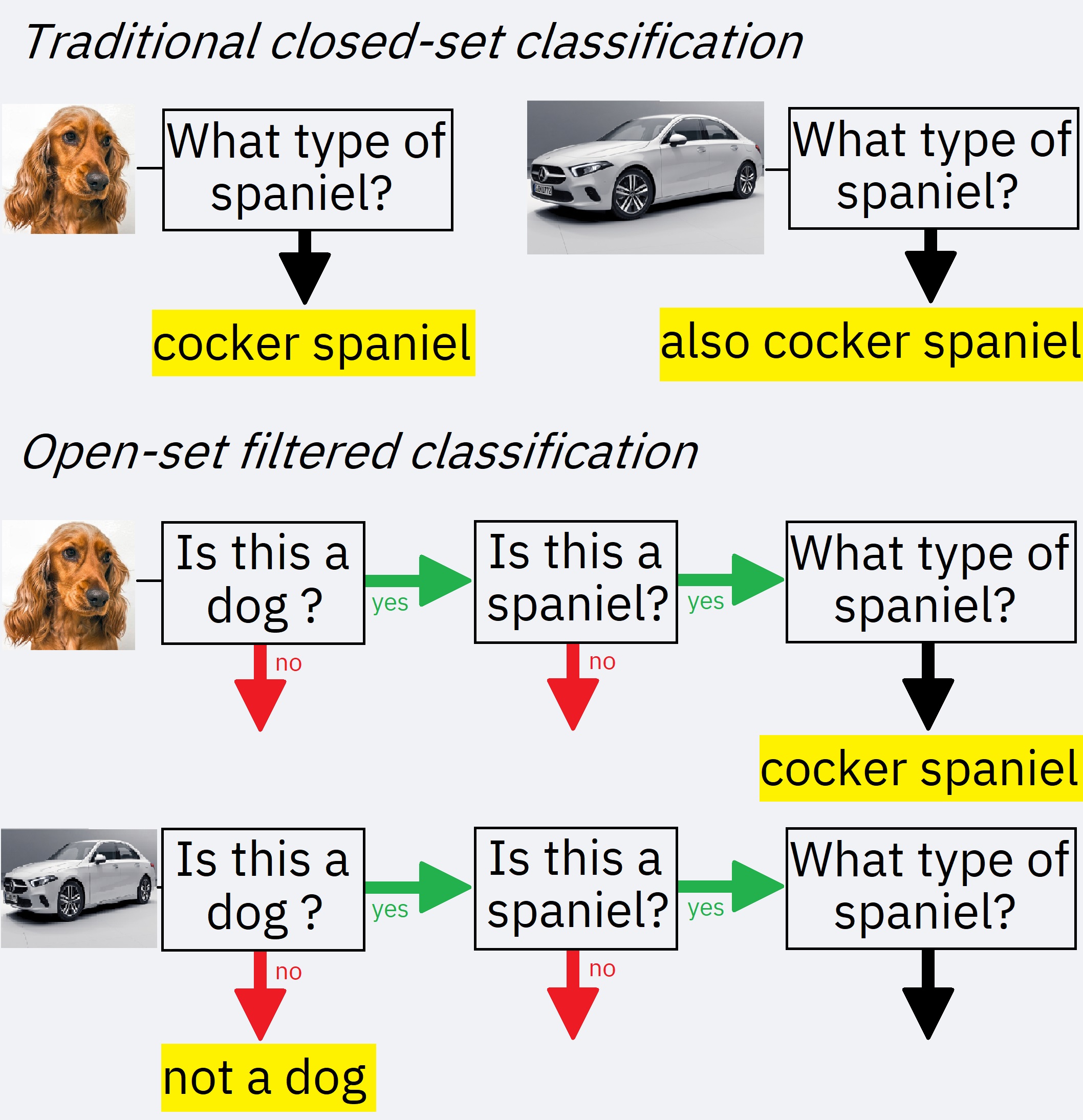Open-set classification is critical for letting image classifiers work in the real world. Source: https://github.com/Andrewwango/open-set-resnet
Try me out here: https://share.streamlit.io/andrewwango/open-set-resnet/web-app/src/web-app.py
The API is available here: https://open-set-resnet-api.herokuapp.com/
-
git clone https://github.com/Andrewwango/open-set-resnet.git cd open-set-resnet pip install -r requirements.txt cd python -
Start API:
uvicorn api.src.main:app --reload -
Start Web app:
streamlit run web-app/src/web-app.pyOR -
Query the API using Swagger UI at
http://localhost:8000/docsOR -
Call the inference function in Python (see
)
from api import open_set_inference as osi osi.classify_open_set(image='test-images/animal.jpg')
Currently, a normal image classifier will assign a random image a category despite it not belonging to any specific category. These closed-set classifiers often do this with high confidence. An open-set classifier should detect images that do not belong in any of the classes. For example, a spaniels classifier should filter images of non-dogs and of non-spaniels; a car-model classifier should filter images of other makes or non-cars.
This repo contains an example classifier which takes a spaniel/dog/Mercedes model classifier and adds open-set filtering capabilities. The classifier structure is as follows:
- Classify image according to original ImageNet and reject if not car/dog-like (based on ImageNet labels).
- Classify image according to 2-class "species" classifier trained on spaniels vs. non-spaniels/Mercedes vs. non-Mercedes, and reject if not spaniel/Mercedes.
- Classify image according to original closed-set classifier (spaniel-breeds/Mercedes models).
All the models are based on the ResNet architecture and use PyTorch for training and inference:
- Model 1: resnet18 with pretrained weights on ImageNet
- Model 2: resnet18 pretrained, and then retrained to 2-class dataset (correct make/species vs. incorrect) using transfer learning.
- Model 3: original pretrained and retrained resnet50 closed-set classifier.
This is the equivalent of first asking a friend what a car is, then asking a friend what Mercedes is, then what the individual models are.
The open-set inference is developed as an API using FastAPI and uvicorn. This can be accessed using requests.post. You can test out different models on the Streamlit web-app. We deploy this repo as 2 separate apps on Heroku.
Model training can be done in the . To create a different open-set classifier, two models are needed:
- Your original closed-set classifier.
- Train another model with all the closed-set classes in one class, and images of different species but same thing in the other (e.g. non-Mercedes cars, or non-cow animals). To balance the sets, an augmentation script is provided
. The augmentation performs a random rotation, a LR flipping, a random noise operation, Gaussian blur, a shear affine transformation and a contrast adjustment to produce 7 copies of the original image.
To set up another model,
- Put images in training folder/AWS S3 bucket.
- Run training notebook with correct training folder location.
- Move models over to
api/src/models - Add classifier to
api/src/classification.configincluding model locations and label names.
Problem statement and possible solutions: https://towardsdatascience.com/does-a-neural-network-know-what-it-doesnt-know-c2b4517896d7 The literature proposes methods which involve replacing the final SoftMax layer with a new layer (https://arxiv.org/abs/1511.06233), or changing the loss function to maximise distance between known classes and the unknown (https://arxiv.org/pdf/1811.04110v2.pdf, https://arxiv.org/pdf/1802.04365.pdf).
- Tuning the mercedes-non-mercedes model to improve the acceptance of mercedes at the cost of rejecting non-mercedes (reducing type II errors at the cost of accepting more type I errors).
- Improving inference time of mercedes cars, as they must go through 3 models for a prediction.
